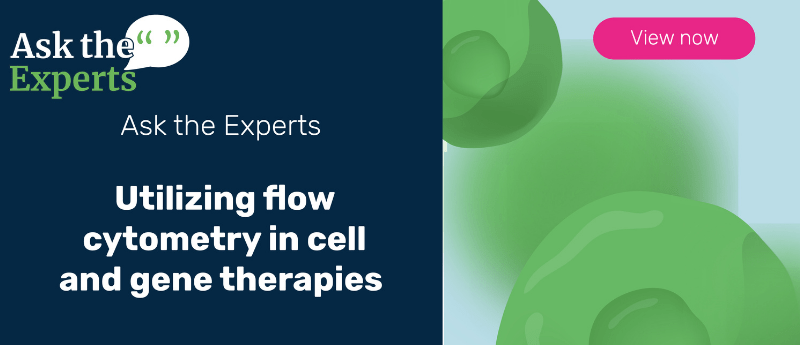Ask the Experts: Dr Girish Kumar Srivastava

In this feature, we interview experts and key figures from pharma, CRO and academia for their perspectives on the use of flow cytometry in cell and gene therapies (CGTs). Our expert for this feature also takes a look at recent developments of CGTs and how flow cytometry has been utilized in these developments.
Meet the expert
 Dr Girish Kumar Srivastava is a senior researcher of Valladolid University (Valladolid, Spain) and is Editor-in-Chief of the Journal of ALLBIOSOLUTION (ISSN 2605-3535). He holds a master’s degree and PhD in molecular and cellular immunology from Granada University (Granada, Spain) and a master’s degree in molecular biology and biotechnology from Govind Ballabh Pant University (Pantnagar, India). He holds DBT, CSIR and AECID fellowships. His research interests include stem cell therapy, regenerative medicine and neuroprotection for retina, anti-oxidant-based product development and medical device safety and quality assurance for the industry. He has three patents, two of which have transferred to industry. Girish is a proposal evalutor for the European COST program, ANEP, MINECO, ANPCyT etc. as well as many other public and private entities.
Dr Girish Kumar Srivastava is a senior researcher of Valladolid University (Valladolid, Spain) and is Editor-in-Chief of the Journal of ALLBIOSOLUTION (ISSN 2605-3535). He holds a master’s degree and PhD in molecular and cellular immunology from Granada University (Granada, Spain) and a master’s degree in molecular biology and biotechnology from Govind Ballabh Pant University (Pantnagar, India). He holds DBT, CSIR and AECID fellowships. His research interests include stem cell therapy, regenerative medicine and neuroprotection for retina, anti-oxidant-based product development and medical device safety and quality assurance for the industry. He has three patents, two of which have transferred to industry. Girish is a proposal evalutor for the European COST program, ANEP, MINECO, ANPCyT etc. as well as many other public and private entities.
Questions and answers
1. How has flow cytometry recently contributed to the field of cellular and genetic therapeutics?
Flow cytometry offers advantages over traditional colorimetric- or fluorescent-based assays because it can detect several biological parameters, including alterations in cellular and nuclear membranes and genetic materials of cells. It supports the characterization of a cellular population on cell manipulation and gene delivery. All of these are critical issues from the point of view of safety and efficacy measurements for cellular and genetic therapeutics.
2. Flow cytometry has been utilized for the immune monitoring of CAR-T cells. What are the next cellular targets for therapy that can be monitored with flow cytometry?
Cellular engineering for the expression of CARs has become an innovative approach in cancer therapy as CAR-T cells are able to recognize and kill the target cells. Flow cytometry definitely plays a role in monitoring phenotyping and functional characteristics of CAR-T cells, surrounding cells including cytotoxicity and releasing bioactive molecular profiles at targeted places.
3. What are some important aspects to consider when deciding on the bioanalytical techniques during cell and gene therapy studies?
If a therapy is directed for clinical use, the bioanalytical techniques need strict Good Laboratory Practice that requires trained staff, result reproducibility and good documentation. An innovative approach will add more value to compete with other approaches of the R&D market.
4. How does the quantitation of cell populations aid in the development of cell and gene therapies.
In CGT development, safety and then efficacy measurements are necessary for confirming that the developed innovative approach is functional in treating patients. Reproducibility of results is important to follow GLP and GMP. It requires quantification and characterization of cell populations to comply with the standards of innovative approach and which ensures the success of therapy.
5. What capabilities does flow cytometry bring to cell and gene therapy development that make it a favorable bioanalytical tool in the laboratory?
There are several advantages to using flow cytometry, including high speed analysis, the capacity to characterize single cells or large population of cells, identifying small cell populations, simultaneous analysis on multiple parameters, quantification, data sharing with a global team, data consistency identification and data tracing and comparison and monitoring are just a few of them. Flow cytometry is continuously improving to meet new challenges. All these combined make flow cytometry a favorable tool for bioanalysis.
6. What are the bioanalytical challenges to implementing flow cytometry into cell and gene therapy developments?
The first challenge would be cost and the ongoing maintenance of the instrument, as well as the need for a highly trained staff because this instrument is very expensive and sophisticated. The problem of blockage in the microfluidics system occurs from time to time, requiring warmup and laser calibration. On the other hand, because it needs single cells, tissue structure is lost. There is no clear guidance on regulatory points, limiting data acceptance and delaying the approval process.
In association with:







